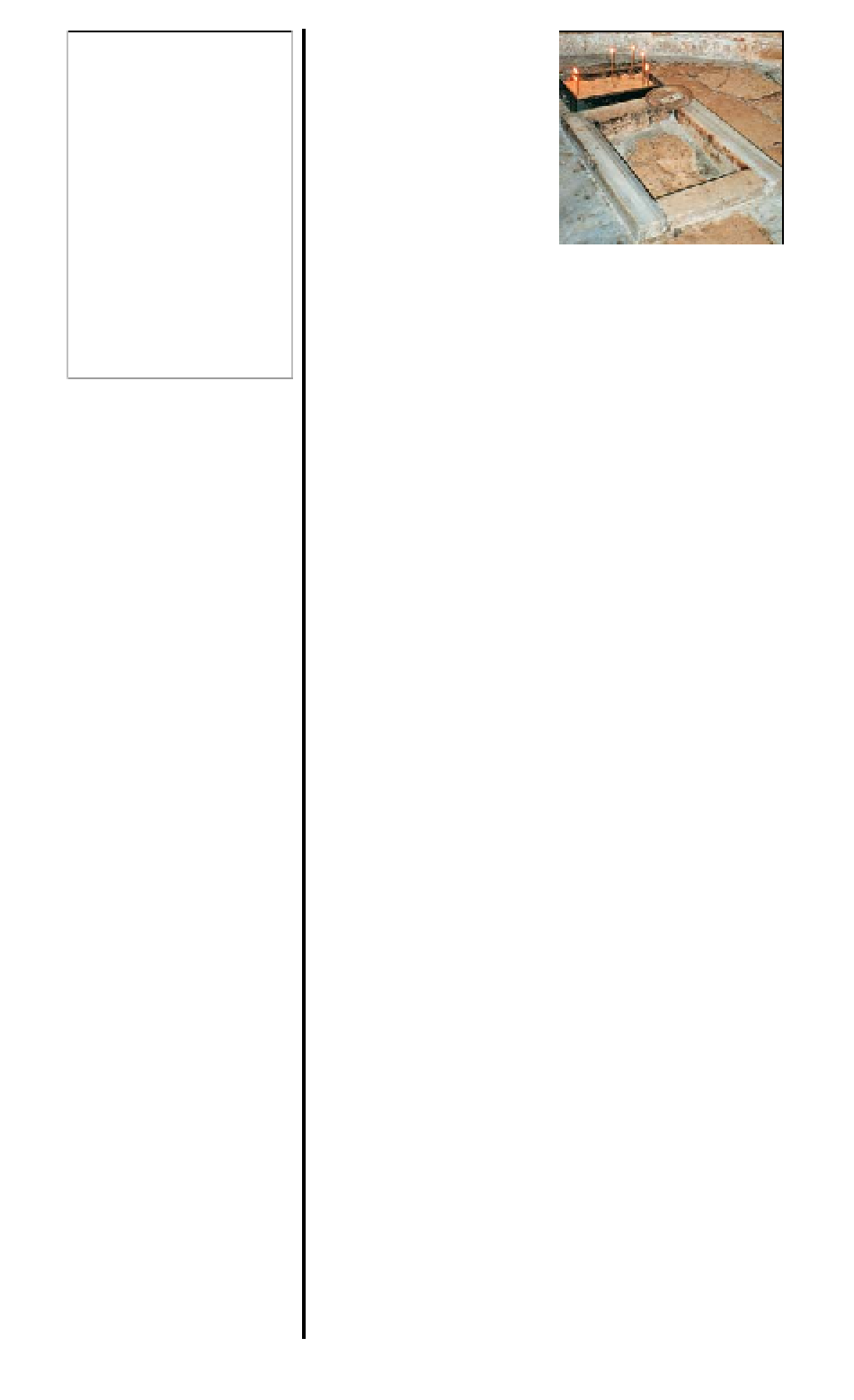Travel Reference
In-Depth Information
lously formed the image of
Christ's footprints. The Crusad-
ers rebuilt the chapel as an
octagon and the column bases
of a surrounding Crusader por-
tico are still visible outside. By
this time, the footprints, now
set in stone, were venerated
here and the right imprint re-
mains to this day. The capitals
were carved in the 1140s and
the two depicting animals and
leaves are particularly beautiful.
The chapel became a Muslim
shrine after Saladin's conquest
in 1187. In 1200 it was roofed
with a dome, the arches were
walled in, a mihrab added and
a surrounding wall built. The
outer wall today is largely re-
built. The adjacent minaret
and mosque are 17th century.
The underground tomb near
the entrance is venerated by
Jews as belonging to the Old
Testament prophetess Huldah,
by Christians as St Pelagia's and
by Muslims as that of the holy
woman Rabia el-Adawiya.
Site of Christ's footprint in the
Mosque of the Ascension
AD 326. Called Eleona (
elaion
in Greek meaning “of olives”),
it was sited above a grotto
where the Ascension was
commemorated. By Crusader
times, the church had been
rebuilt three times and the
grotto was known as the
place where Christ had taught
the Disciples the Paternoster
(meaning “Our Father”), or
Lord's Prayer.
The present church and a
Carmelite monastery were built
close by between 1868 and
1872 by the F
r
ench Princesse
de la Tour d'Auvergne.
Church of the Ascension's bell tower
in the quiet convent gardens
Russian Church of
the A scension
1
Off Ruba el-Adawiya St, Mount of
Olives.
Map
2 F3
.
Tel
(02) 628 4373.
l
#
9am- noon Tue & Thu.
&
This is the church of a still
active Russian Orthodox
convent built between 1870
and 1887. The bell tower, a
prominent landmark on the
Mount of Olives, was built tall
enough to allow pilgrims too
infirm to walk to the River
Jordan to see it from afar. The
8-tonne bell was hauled from
Jaffa by Russian pilgrims.
Two Armenian mosaics were
found during construction. A
small museum was built over
the most beautiful, which is
fragmentary and dates from the
5th century AD; the other, com-
plete and of slightly later date,
is in the Chapel of the Head
of John the Baptist, inside the
church. An iron cage on the
floor shows where John's
head was supposedly found.
Church of the
Paternoster
3
Mount of Olives.
Map
2 F4.
Tel
(02)
A Excava-
tions of the Byzantine church
in 1910-11 unearthed a marble
plaque engraved in Latin with
the Paternoster. In 1920, the
grotto was restored, but plans
to reconstruct the Byzantine
church were never realized
through lack of funds.
Today, the 19th-century
church and its cloister are
famous for the tiled panels
inscribed with the Paternoster
in more than 60 languages.
626 4904.
#
8:30am-noon &
2:30-4:30pm Mon-Sat.
This church stands next to
the partly restored ruins
of one commissioned by the
Emperor Constantine, who
sent his mother, St Helena,
to supervise construction in
Mosque of the
Ascension
2
Off Ruba el-Adawiya St, Mount of
Olives.
Map
2 F3.
#
daily (if closed,
ring bell).
&
Poemenia, a Christian noble-
woman, built the first
chapel here around AD 380 to
commemorate Christ's Ascen-
sion. It had three concentric
porticoes around an uncovered
space, where the dust miracu-
Panels inscribed with the Lord's Prayer, Church of the Paternoster
For hotels in this area see p256














